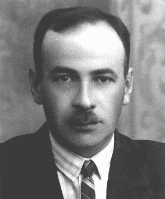
Herman Judelowitz
Born: 1896
Aizpute, Latvia
Herman was the oldest of nine children born to a Jewish family in the Latvian village of Aizpute. He was a World War I veteran, and after the conflict, in 1918, he fought for the establishment of a free Latvian republic. Two years later he married Sarah Gamper and they settled in the city of Liepaja, where they owned a shoe store. By the late 1920s they had two daughters, Fanny and Jenny.
1933-39: Herman designed patterns for the uppers of shoes, which he used to fashion into finished shoes. His shoe store was in front of the workshop. In 1935 Herman and Sarah had a third daughter, Liebele. Both Sarah and Herman were Zionists and they often collected money to help Jewish settlers purchase land in Palestine.
1940-41: In June 1940 the Soviet Union occupied Latvia. The Soviets seized Herman's business and nationalized it, but Herman was forced to continue running his business. In June 1941 Germany invaded Latvia, and quickly reached Liepaja. The Germans immediately began roundups of Jewish males in the city, ostensibly for conscript labor details: none of these men ever returned. A month later, an order was issued for men of working age to report to the city square. Herman reported to the city square.
In late July 1941, Herman and the rest of the men in his group were taken north to the village of Skeden. There they were shot and dumped into mass graves.